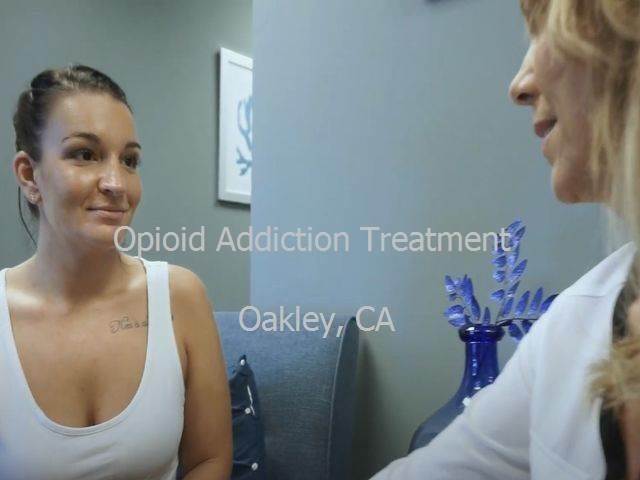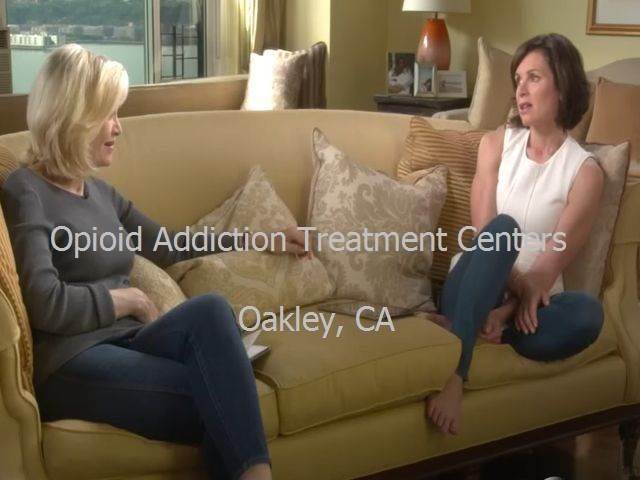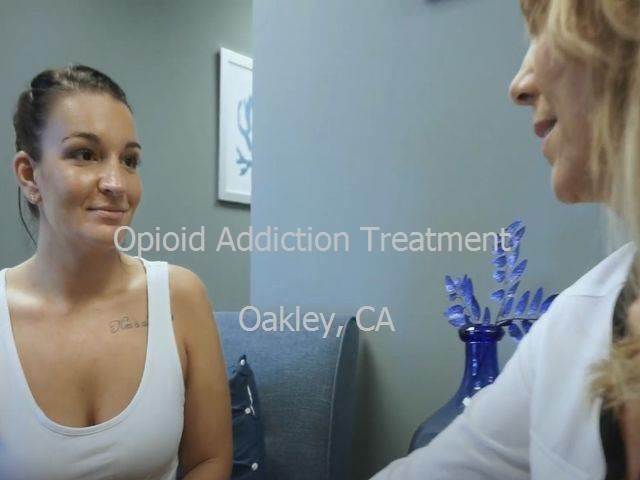Opioid use disorder is a health issue that affects lots of people in the United States nowadays. 10s of countless individuals die from opioid overdose every year, and many more are dealing with opioid addiction. Regrettably, instead of going to the health center to get treatment for substance abuse carries a bad stigma, individuals try to eliminate the addiction on their own. This frequently leads to failure and regression.
The problem of opioid use disorder in Oakley, California

Although, nowadays, effective treatments for opioid misuse are becoming more accessible, a great deal of people still experience this concern. They frequently blame themselves and their lack of determination for the failure to eliminate drug addiction. In reality, this disorder is not a kind of bad behavior or an indication of ethical failure. It is a chronic medical condition that involves substantial changes in specific parts of the brain, a physical dependence that is very challenging to fight without expert help. Only recently, doctor came close to comprehending the mechanism of opioid addiction and developing much better opioid treatment programs.
The Oakley, California, opioid addiction treatment center provides a number of methods of dealing with substance use disorder. Keep checking out to discover the nature of opioid addiction and which types of treatment offer the patients a higher opportunity of successful recovery.
Opioid addiction treatment rehabilitation services
National institutes for healthcare developed various methods of helping clients with opioid dependence. Some of them involve taking addiction medicine to deal with opioid cravings. In many cases, treatment retention is recommended. It is vital to openly discuss your scenario with health care providers to select the most effective treatment plan.
Substance abuse treatment include numerous types:
- Treatment retention. Some individuals wish to avoid the environment that motivates opioid misuse. They can not combat drug abuse when they are surrounded by triggers and their family members or pals have simple access to opioids. The drawback of this approach is the necessity to take a break from work. The positive aspect of this program is satisfying people with the very same struggle and getting their assistance.
- Outpatient opioid addiction treatment. Patients can continue to work and live as they did while receiving health and human services. They go to medical facility for systematic reviews, counseling and medications. This is a less drastic change of lifestyle compared to residing in the treatment facilities. Such clients do not risk losing their tasks but need to be responsible about staying on track.
- Behavioral therapy. This type of treatment includes educating clients on how to make positive changes in their habits gotten in touch with opioid use disorders. They get access to the entire variety of mental health services such as cognitive behavioral therapy, private therapy, contingency management, family therapy, support groups, etc.
- Medication assisted treatment (MAT): medications plus therapy. Whether it is a property program or an outpatient healthcare service, any treatment plan can consist of taking medications. This type of treatment of opioid misuse has proven to be really reliable. Sadly, it is frequently misunderstood and treated with suspicion. Medications that are used to treat opioid addiction belong to the group of opioids themselves, so there is a misconception that by taking them you merely replace one addiction with another. This is not real for two factors. First, the medicines do not produce the euphoric effects unlike other opioid drugs. And 2nd, the statistics reveal that applying medical assisted therapy assists to significantly minimize the number of deaths from overdose
- The disadvantage of this kind of treatment is that it is not extensively readily available. Prior to the practitioners can recommend these medications, they require to go through particular training. And after they finish the course, they can only recommend this treatment to a limited variety of clients. For that reason, facilities that provide MAT frequently have a long waiting list. The benefit of this kind of treatment is that thanks to the medications, the clients do not experience extreme withdrawal symptoms. The yearnings are not so strong too, so most people stay in treatment and are less most likely to regression.
Just a professional clinician informed on substance use disorder can select the best treatment. The physician requires to know and take into account all the factors that led an individual to drug abuse and mental health problems. Contact the opioid addiction treatment center in Oakley, California, to get certified assistance.
System of opioid addiction
Opioid drugs hack the reward system of a person’s brain and make the person feel excellent if they take opioids. Generally, satisfying such needs as consuming or recreation results in the release of dopamine. This hormonal agent is accountable for the feeling of satisfaction or complete satisfaction. It rewards people for doing things that are necessary for the survival of humankind.
When opioids reach the brain, they attach themselves to particular receptors, which sets off the reward system and creates the feeling of high. Individuals wish to experience that feeling once again. More importantly, their brain signifies them that taking opioids is the most important thing for their survival. That is how the addiction settles in.
There are 2 results of this change in the brain:
- The very first one is the development of drug tolerance. People need more drugs to reach a state of euphoria. Opioid use disorder regularly begins with prescription painkiller. Sometimes patients increase the dosage of prescription opioids to get high, and this results in opioid abuse. Some people even change to stronger drugs like heroin.
- The second outcome is opioid dependence. Individuals continue substance abuse to prevent withdrawal symptoms. Due to malfunction of the reward system, without the drugs individuals feel uneasyness and have a dreadful mood.
Other symptoms of opiate withdrawal include:
- Body aches;
- Absence of sleep;
- Queasiness;
- Diarrhoea;
- Goosebumps, and so on.
Understanding about the nature of substance use disorders can help physicians educate their patients on what withdrawal symptoms to anticipate and how to deal with the cravings. Depending upon the patient, doctors pick the most effective treatments that may include medication prescription and behavioral therapies. It might not be possible to completely eradicate the opioid addiction, but mental health services can significantly reduce the opioid misuse and the number of heroin overdose deaths.
Opioid addiction needs to be treated the method one would treat a chronic illness. Individuals suffering from drug addiction are motivated to sign up with the Oakley, California, rehab programs and enhance their health and general lifestyle. Once you give up the drugs, return for maintenance treatment.
Who can get treatment for opioid abuse in Oakley, CA?

Individuals frequently feel embarrassed to go to the health center for opioid abuse treatment. There are two primary reasons for this: they are either afraid to have a bad image in the neighborhood or have actually currently given up on themselves. But these concerns must not dissuade patients from fighting substance use disorders. Anybody is complimentary to reach rehab centers and see what assistance they can get.
Two main categories of opioid use disorders are treated with Oakley, California, rehab programs:
- Prescription drug abuse. Opioids are usually recommended in the form of painkillers for persistent or severe pain. It is possible to develop addiction to these medications. As a result, some patients begin to misuse opioids and take larger doses of them. National institutes such as the Center for disease control produced suggestions on how to assist these patients slowly reduce the drug use.
- Heroin addiction. This disorder frequently comes from the previous one. But some individuals turn to this drug for leisure purposes. Combating heroin addiction is extremely hard, and patients should utilize all the treatment resources they can access. Even then, it often takes numerous attempts to beat the disorder.
The most effective treatments normally include both mental health services and medications.
Frequently Asked Questions – FAQ
Is opioid addiction a mental illness?
Opioid use disorder is a chronic brain condition. At first, individuals may turn to drugs because of individual issues. That is why substance abuse and mental health are frequently treated simultaneously. A lot of patients gain from counseling, behavioral therapies and support groups. However it is important to remember that opioids make significant modifications to the brain, making it extremely hard to combat the addiction without medications.
What medications are used to treat opioid use disorder in Oakley, California?
National institutes approved 3 medications for treatment of opioid drug abuse: methadone, buprenorphine and naltrexone. They have different names and effects on the brain. The first two medications replace the opiates and smooth the withdrawal symptoms without making the clients high. Naltrexone blocks the mu-opioid receptor, working as an opioid antagonist.
How do I get medication-assisted treatment in Oakley, California?
Just a licensed clinician can prescribe you medications for opioid use disorder. Visit the office of a healthcare supplier that completed the required training and request a program of medication-assisted treatment.

